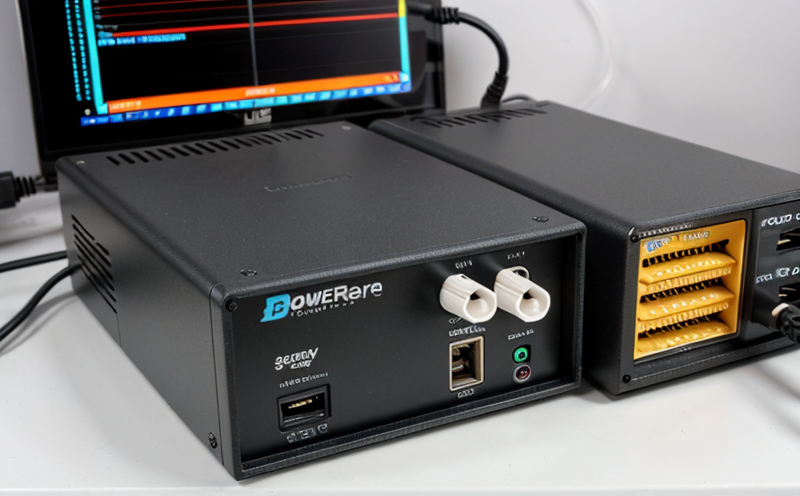EN 60335 Safety Testing for Household Power Supplies
The European Standard EN 60335-1 is one of the most important standards in ensuring electrical safety, particularly for household power supplies. This standard covers a wide range of portable and fixed electric appliances used in domestic environments. The primary focus of this testing is to ensure that products meet stringent safety requirements to prevent hazards such as fires, shocks, and other risks associated with faulty or inadequately designed electronics.
EN 60335-1 addresses the safety aspects related to the design, construction, and labeling of appliances. It aims to protect users by minimizing the risk of injury from electrical faults within household power supplies. The standard applies not only to standalone units but also to integrated components within larger systems like televisions, computers, and other electronic devices.
The testing process involves several stages designed to assess various potential hazards. This includes evaluating insulation resistance, creepage and clearance distances between conductors, and ensuring proper grounding configurations. Additionally, tests are conducted on the thermal protection mechanisms used in power supplies to ensure they operate correctly under both normal and fault conditions.
One critical aspect of EN 60335-1 compliance is understanding its classification system for household appliances. Appliances can be classified into different categories based on their intended use, voltage range, and other factors relevant to safety considerations. For instance, Class I devices require grounding while Class II units do not rely solely on insulation for protection against electric shock.
In addition to these classifications, there are specific requirements outlined in EN 60335-1 that must be met by manufacturers before their products can enter the European market. These include labeling instructions which clearly indicate compliance with relevant standards and any necessary warnings or precautions users should follow when using the product.
When it comes to implementation, laboratories specializing in this type of testing utilize state-of-the-art equipment tailored specifically for measuring electrical parameters like voltage, current, and power consumption. Specialized software helps analyze data collected during tests to determine whether each parameter falls within acceptable limits defined by EN 60335-1.
Compliance with these standards is crucial not only from a legal perspective but also as part of broader quality assurance practices aimed at maintaining high levels of product reliability and safety. By adhering strictly to the procedures set forth in EN 60335-1, manufacturers can ensure their products meet all necessary safety criteria before they reach consumers.
It is important for companies involved in developing or manufacturing household power supplies to understand these requirements fully so that they can incorporate appropriate safeguards into their designs early on. This ensures not only compliance but also enhances overall product quality and user confidence.
Scope and Methodology
The scope of EN 60335-1 testing encompasses a broad range of portable and fixed electric appliances used in domestic settings. This includes but is not limited to, hair dryers, small kitchen appliances like toasters or coffee makers, and lighting fixtures among others.
During the testing process, various parameters are measured using high-precision instruments calibrated according to international standards such as ISO 7658 for measuring resistance. Key areas of focus include:
- Insulation resistance
- Creative clearance and creepage distances between conductors
- Grounding configuration effectiveness
- Thermal protection system performance
To ensure thoroughness, multiple trials are conducted to account for variations in test results due to environmental factors or minor manufacturing inconsistencies. All collected data is analyzed meticulously against the criteria specified in EN 60335-1.
The methodology employed involves setting up controlled environments where tests can be performed under standardized conditions replicating real-world usage scenarios as closely as possible. This allows for accurate assessment of how well a product performs under both normal operating conditions and potential fault states.
For instance, when testing insulation resistance, samples are placed in chambers designed to simulate different humidity levels and temperatures representative of typical residential environments. Similarly, during thermal tests, samples are subjected to prolonged periods of operation until they reach steady-state temperatures or fail prematurely due to overheating.
Customer Impact and Satisfaction
The primary goal of EN 60335-1 testing is to provide customers with peace of mind knowing that the power supplies they purchase meet rigorous safety standards. By ensuring compliance, labs like ours contribute significantly towards enhancing consumer trust in electronic products.
For quality managers and compliance officers within manufacturing firms, adherence to these standards helps avoid costly penalties associated with non-compliance. It also demonstrates a commitment to producing safe and reliable goods which can lead to increased market share and brand loyalty.
R&D engineers benefit greatly from our testing services as it allows them to identify areas where improvements are needed early in the product development cycle. This proactive approach ensures that any necessary changes are made before prototypes reach production stages, saving time and resources.
Environmental and Sustainability Contributions
In addition to enhancing safety for end users, our services play a crucial role in promoting environmental sustainability. By ensuring that household power supplies meet strict safety criteria, we help prevent accidents which could otherwise lead to waste generation from discarded products.
The efficient design of these appliances also contributes positively towards reducing energy consumption and thus lowering greenhouse gas emissions associated with electricity production. This aligns closely with global efforts aimed at combating climate change through sustainable practices.





